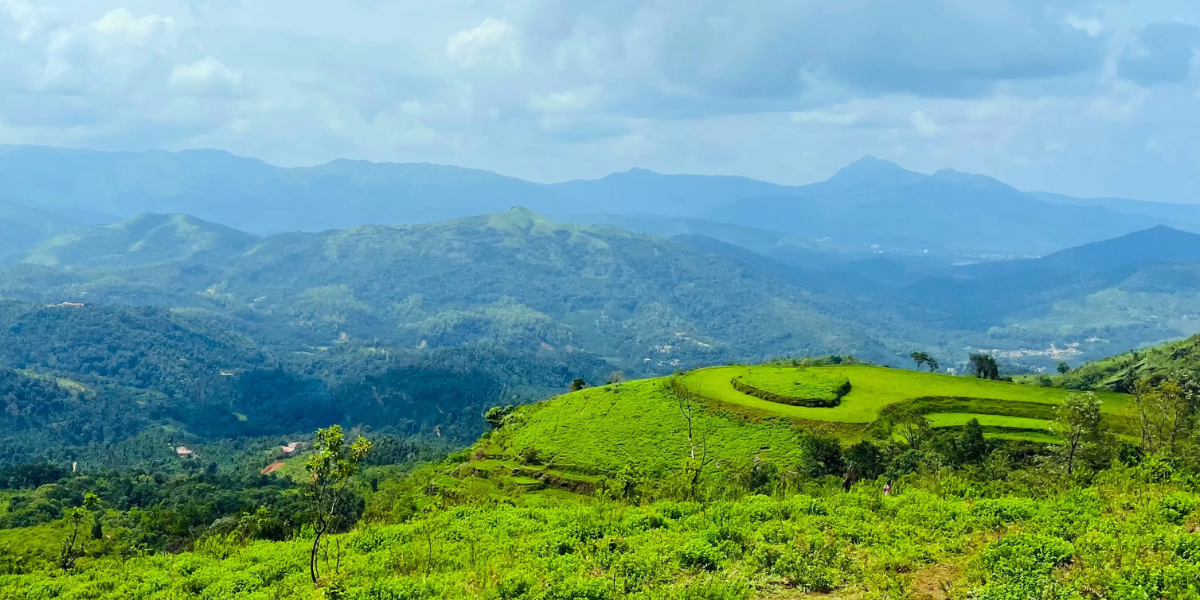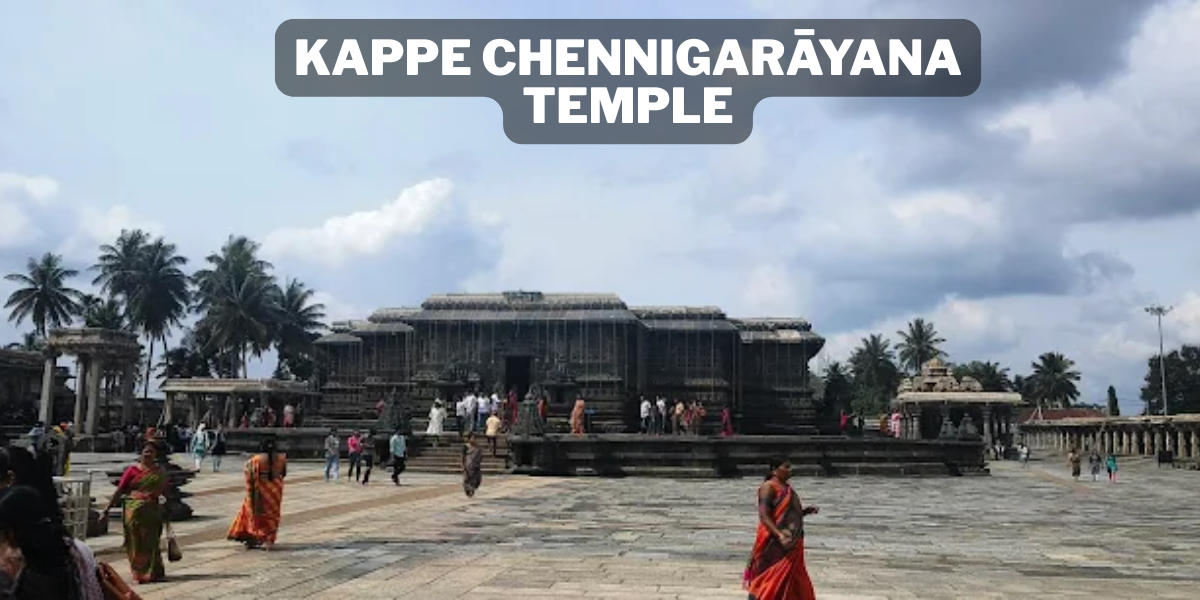Eshwaragiri Shri Malahanikareshwara Swamy Devasthana – ever heard of it? If not, let us take you on a little journey to one of Karnataka’s most peaceful spiritual spots.
Tucked away in the lush hills near Chikmagalur, this ancient Shiva temple isn’t just a place of worship—it’s where legends live, rituals breathe, and nature embraces you in the purest silence. Whether you’re into temple architecture, spiritual retreats, or just love exploring offbeat places with a deep cultural vibe, this place has it all.
Walking up the stone steps with the cool breeze on your face, hearing the temple bells echo through the forest… there’s a calm here that’s hard to put into words. And the view from Eshwaragiri Hill? Breathtaking.
If you’re planning a trip to Chikmagalur, don’t miss this. In fact, pair it with a stay at a nearby nature-friendly resort, and you’ve got yourself the perfect blend of spirituality and relaxation.
Come along as we share everything you need to know about this hidden gem—from its mythological roots and timeless rituals to travel tips, festivals, and where to stay nearby. Let’s dive in.
The Origins of Malahanikareshwara Temple
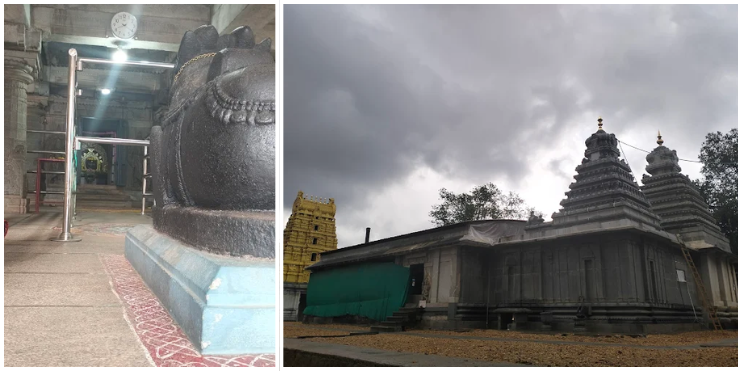
The Eshwaragiri Shri Malahanikareshwara Swamy Devasthana carries a story rooted in legend and ancient worship. Situated in the Western Ghats, the temple draws seekers looking for a deeper spiritual connection and timeless experience.
Sage Vibhandaka and the Ancient Lingam
According to temple lore, the sage Vibhandaka, a revered Paramarishi, discovered the original lingam in the forest. He was guided by spiritual intuition and established the site as sacred. The lingam continues to be the centerpiece of worship, radiating an aura that invites devotion.
Many rituals introduced by the sage remain in practice. These enduring customs add to the spiritual heritage of the Malahanikareshwara Temple Sringeri, forming a link between ancient reverence and present-day faith.
Meaning of ‘Malahanikareshwara’
The name “Malahanikareshwara” reflects profound symbolism. “Mala” refers to impurity, and “Nikareshwara” translates to destroyer, highlighting Shiva as the remover of all impurities.
This meaning aligns closely with the purpose of the Eshwaragiri Shri Malahanikareshwara Swamy Devasthana. It is a place where worshippers come seeking inner clarity and spiritual purification through devotion.
Temple Architecture Through the Ages
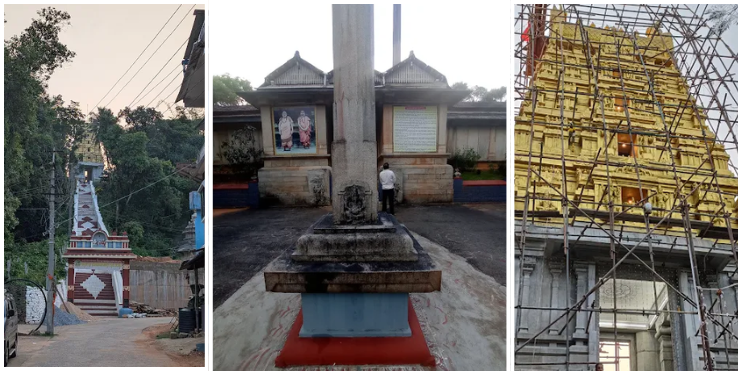
The Malahanikareshwara Temple Sringeri represents a blend of evolving architectural styles shaped by dynasties and saints. Every section of the temple reveals design decisions rooted in purpose and aesthetics.
Main Structure and Iconography
Built on a hill, the temple is reached by a set of stone steps that lead visitors upward with reverence. The four-tiered Rajagopuram greets them with its towering presence. Inside, the stone dhwajastambha and balipedum mark the path to the sanctum.
The layout includes the navaranga (pillared hall), antarala (anteroom), and garbhagriha (inner sanctum). The raised placement of the Malahankareshwara Sringeri structure enhances its peaceful and elevated atmosphere.
Vijayanagara Influence and Renovations
During the Vijayanagara period, the temple saw a significant transformation from wood to stone. This upgrade introduced durable craftsmanship and refined details throughout the building.
The Keladi rulers added the magnetic Nandi and enhanced the prakara walls. Saints from the Sharada Peetham, especially the Jagadgurus, played a key role in guiding restorations at the Eshwaragiri Shri Malahanikareshwara Swamy Devasthana.
Art and Sculptural Heritage
High-relief carvings throughout the temple reflect classical Vijayanagara artistry. Figures of Narasimha, Rama, Hanuman, and Durga decorate the pillars, bringing stories from scriptures to life.
Later additions by Chettinad artisans introduced new layers of detail and cultural expression. These carvings enrich the experience at the Malahanikareshwara Temple, Sringeri, preserving its artistic legacy.
Subshrines and Divine Presence Within the Complex
Within the walls of the Eshwaragiri Shri Malahanikareshwara Swamy Devasthana, various subshrines offer spiritual depth and diverse representations of divine energy.
Deities Inside the Sanctum
At the heart of the temple stands Lord Malahanikareshwara, flanked by Goddess Bhavani. Nearby, Sthambha Ganapati, Chandikeshwara, and Durga complete the circle of sanctity.
Each deity brings unique spiritual symbolism, offering worshippers a multi-faceted experience of devotion. The atmosphere inside the Malahanikareshwara Sringeri sanctum feels deeply rooted in divine presence.
Outer Shrines and Symbolism
Beyond the main sanctum, shrines dedicated to Meenakshi Sachidanandeshvara, Kshetrapalaka, and Bindu Madhava extend the spiritual journey. The Bindu Madhava shrine is especially rare, featuring the deity with consorts and a meditating saint.
These sacred spaces highlight themes of guardianship, divine union, and cosmic order. Together, they enhance the richness of the Malahanikareshwara Temple Sringeri Complex.
Mythology and Mystique of the Temple
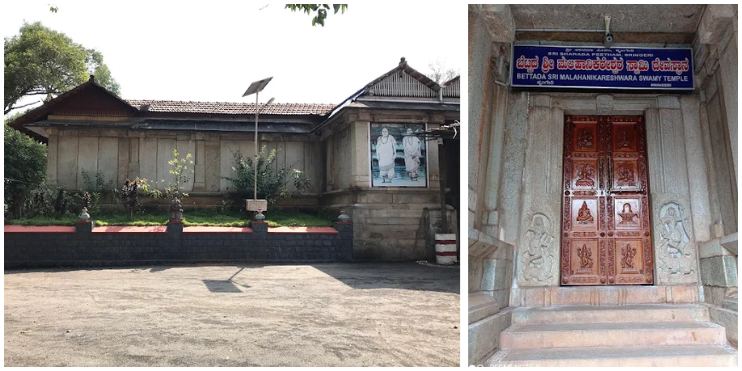
Legends passed down through generations surround the Eshwaragiri Shri Malahanikareshwara Swamy Devasthana. These stories add a layer of wonder and curiosity to the temple’s spiritual presence.
The Secret Door and Arabian Sea Legend
One local legend tells of a hidden tunnel connecting the temple to the Arabian Sea. Though unconfirmed, this tale persists and fuels fascination among visitors.
Such mysteries are part of the charm at Malahanikareshwara Sringeri, giving the temple a distinct sense of depth beyond the visible rituals and architecture.
Mystical Energy and Local Beliefs
Many believe the temple holds specific spots of powerful energy that help with healing and inner balance. Visitors often speak of feeling calmer and lighter after spending time within the complex.
These experiences support the faith in the Eshwaragiri Shri Malahanikareshwara Swamy Devasthana as a place where spiritual energy is active and accessible.
Festivals and Rituals That Bring the Temple to Life

Celebrations at the Malahanikareshwara temple Sringeri mark the rhythm of its spiritual calendar. These events bring together communities through devotion, light, and collective prayer.
Grand Celebrations and Observances
The Eshwaragiri Shri Malahanikareshwara Swamy Devasthana is renowned for its vibrant festival calendar that draws thousands of devotees every year. Each celebration highlights the temple’s deep-rooted traditions and spiritual energy.
- Arudradarshanam (December–January): A sacred observance dedicated to Lord Shiva’s cosmic dance, celebrated with Vedic chanting and special rituals.
- Mahashivaratri (February – March): A key festival marked by elaborate pujas, night-long prayers, and deep spiritual significance. On this day, His Holiness performs a special puja to the Lord for several hours during daylight.
- Rathotsavam (February – March): Celebrated from Magha Krishna Dasami to Phalguna Shukla Dvitiya, this festival features a grand procession of the deity in a chariot. It culminates on Magha Amavasya, the day after Mahashivaratri, drawing widespread participation.
- Laksha Deepotsavam (November – December): The temple is illuminated with thousands of oil lamps, creating a divine ambiance that symbolizes light overcoming darkness.
Each of these events brings the temple to life with music, devotion, and traditional ceremonies, making the Malahanikareshwara Temple Sringeri a spiritual destination throughout the year.
Deepothsavam and Kartika Poornima
During Kartika Poornima, devotees light lamps throughout the temple, creating a warm, sacred glow. It’s a symbolic act believed to cleanse and renew the spirit.
Deepothsavam transforms the Malahanikareshwara Sringeri complex into a radiant landscape of devotion, drawing photographers, pilgrims, and spiritual seekers alike.
Ritual Timings and Sevas
The temple welcomes visitors for darshan from 8 AM to 12 PM and then again from 5 PM to 8 PM. Ritual offerings include Ekavara Rudrabhisheka, Ekadashavara, Shatarudra, Panchamritabhishekha, and Archana.
These sevas allow participants to engage directly with the sacred rhythm of the Eshwaragiri Shri Malahanikareshwara Swamy Devasthana.
Experiencing the Temple Beyond Worship
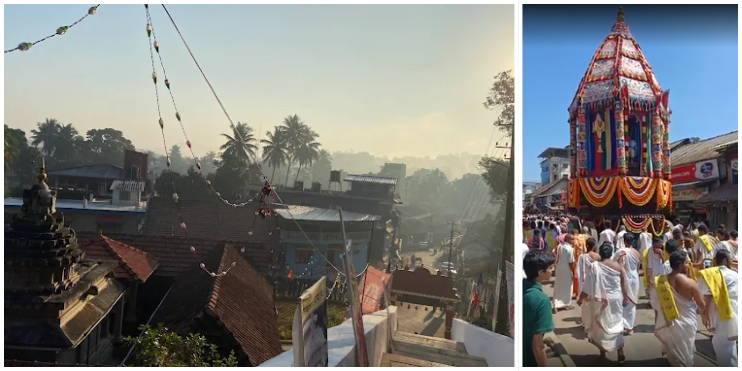
The Malahanikareshwara Sringeri Temple offers more than spiritual services. Its natural surroundings and peaceful aura invite quiet reflection and a break from routine.
The Parikrama and Temple Walk
Walking around the temple offers a chance to appreciate its stone structures, carvings, and meditative ambiance. The parikrama path provides both spiritual significance and visual beauty.
Taking this route becomes a mindful act that deepens one’s connection with the sacred space of the Malahanikareshwara Temple Sringeri.
Natural Setting and Eshwaragiri Hill Charm
Located on Eshwaragiri Hill, the temple enjoys panoramic views and a cool forest breeze. This setting attracts trekkers, photographers, and those looking for quiet moments.
The landscape surrounding Malahanikareshwara Sringeri reinforces its sense of peace, making every visit feel complete and grounded.
Planning Your Visit – Travel Tips for Families and Explorers
Preparing for a trip to the Eshwaragiri Shri Malahanikareshwara Swamy Devasthana can help you make the most of your journey. Here are some tips to guide your travel experience.
Getting There
Reaching the Eshwaragiri Shri Malahanikareshwara Swamy Devasthana is convenient through multiple modes of travel:
- By Air: The closest airport to you is Mangalore International Airport, located approximately 110 km away. From there, you can catch a taxi or take a bus to make your way to the temple.
- By Train: Udupi and Chikmagalur are the closest railway stations with regular connections. After you get to the station, you can easily find local transport to help you reach the temple.
- By Road: The temple is well-connected by road from Mangalore, Udupi, Chikmagalur, and Sringeri. Roads are in good condition and suitable for families, including elderly travelers and children.
Accommodation and Food
Accommodations range from temple guesthouses to modern resorts. Choosing the best resort in Chikmagalur adds comfort and tranquility to your itinerary.
Local food options serve traditional Malnad dishes, often prepared fresh and with regional ingredients.
Best Time to Visit
To fully experience the spiritual and natural richness of the Eshwaragiri Shri Malahanikareshwara Swamy Devasthana, plan your visit between October and March. This period includes major festivals like Mahashivaratri and Laksha Deepotsavam, when the temple comes alive with rituals, lights, and devotion.
If you prefer a quieter ambiance, visit between June and September when the monsoon cloaks the region in lush greenery, offering peace and solitude. Both seasons reveal different aspects of the temple’s charm, making them ideal for a fulfilling pilgrimage or a soul-soothing retreat.
Eshwaragiri Sri Malahanikareshwara Temple – Spiritual Resilience
The Eshwaragiri Shri Malahanikareshwara Swamy Devasthana reflects enduring faith and continuous devotion. Its legacy is kept alive by dedicated leaders and devotees.
Legacy Preserved by Saints and Scholars
Saints from the Sharada Peetham, including Sri Abhinava Vidyatirtha Swamigal, have contributed significantly to the temple’s preservation. Their guidance ensures that traditions remain alive and relevant.
Through their efforts, the Malahanikareshwara Temple Sringeri continues to serve as a center for worship and heritage.
Why This Temple Should Be on Every Pilgrim’s and Traveler’s List
The Malahanikareshwara Sringeri Temple offers a powerful blend of devotion, artistic beauty, and natural peace. It appeals to those seeking reflection, connection, and spiritual growth.
Staying at the best stay in Chikmagalur during your visit can enhance your experience and help you unwind after a fulfilling day.
Stay with Us at Bynekaadu – Your Gateway to Spiritual & Natural Bliss
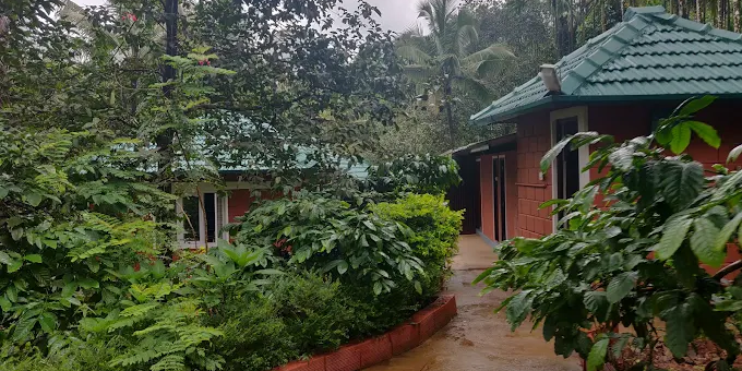
Located close to the temple, Bynekaadu provides thoughtful hospitality that mirrors the area’s spiritual atmosphere. What sets Bynekaadu apart is its blend of traditional design, tranquil natural surroundings, and personalized service tailored for pilgrims and families. The resort stands out as the best resort in Chikmagalur for those seeking an environment that supports both spiritual and personal renewal during their temple visit.
Why We’re the Best Stay in Chikmagalur
Bynekaadu combines comfort with calm surroundings. Whether you need a place to reflect or recharge, it offers the peace you’re looking for. Our service and location make us the best stay in Chikmagalur for temple-goers and families.
Nature, Tranquility & Tradition – All in One Place
Surrounded by hills and plantations, our resort gives you the chance to connect with nature while staying close to your spiritual destination.
Easily accessible from Bangalore and Mangalore, Bynekaadu is a welcoming resort in Chikmagalur for weekend trips and spiritual retreats.
Experience Local Culture with Our Hospitality
Our cottages reflect the traditions of the region, and our food is inspired by local flavors. We share the warmth of Malnad hospitality, making Bynekaadu the best resort in Chikmagalur for an authentic and comfortable stay.
Conclusion
The Eshwaragiri Shri Malahanikareshwara Swamy Devasthana brings together ancient mythology, revered rituals, and time-honored architecture in a setting enriched by nature. From the sage Vibhandaka’s discovery of the lingam to the vibrant festivals and enduring customs, every aspect of the temple tells a story rooted in devotion.
Its stone-carved halls, sculptural grandeur, and sacred energy draw pilgrims, families, and curious travelers alike. Whether it’s the solemnity of a Rudrabhisheka or the glow of Deepothsavam, the experience leaves a lasting impression. With nearby access to the best resort in Chikmagalur, visitors can reflect, rest, and embrace the peaceful rhythm of this spiritually significant hilltop retreat.
Plan your journey with Bynekaadu and make your temple visit truly memorable. Book your stay at the best resort in Chikmagalur and surround yourself with nature, comfort, and local tradition.











